Antiquities: Ericsson T39 and early mobile Internet
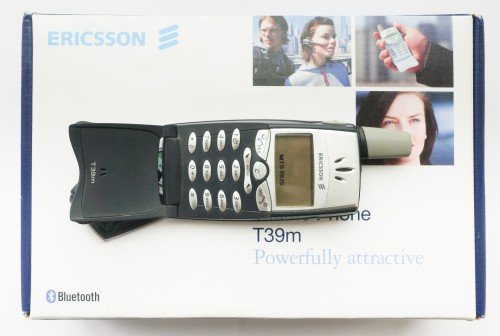 The Ericsson T39 mobile phone went on sale in 2001, and it was still time. Then, if you were lucky, this could be your first mobile phone. I was less fortunate, I had a T20 - also with a flip fashionable at that time, moderately compact, with the only built-in entertainment in the form of the Erix game (there was one more, but that was boring). As usual, to compensate for the lack of suitable pieces of iron, about five years ago I wrote out an Italian beu Ericsson T39m from Italy in its entirety. Today I will tell about him.
The Ericsson T39 mobile phone went on sale in 2001, and it was still time. Then, if you were lucky, this could be your first mobile phone. I was less fortunate, I had a T20 - also with a flip fashionable at that time, moderately compact, with the only built-in entertainment in the form of the Erix game (there was one more, but that was boring). As usual, to compensate for the lack of suitable pieces of iron, about five years ago I wrote out an Italian beu Ericsson T39m from Italy in its entirety. Today I will tell about him.A mobile phone at the beginning of the two thousandths (and if you are quite major, then at the end of the 90s) - this was a new era in a country where there were still many artifacts of the old era, in which even a landline phone was not available to everyone. 17 years later, mobile devices have changed dramatically. The Android smartphone and this old Erickson seem to have less in common than modern laptops and old ones. But in fact, everything is exactly the opposite. The Ericsson T39 is one of the first phones with integrated Internet. And the compatibility of this model with modern networks and software is much better than that of older computers.
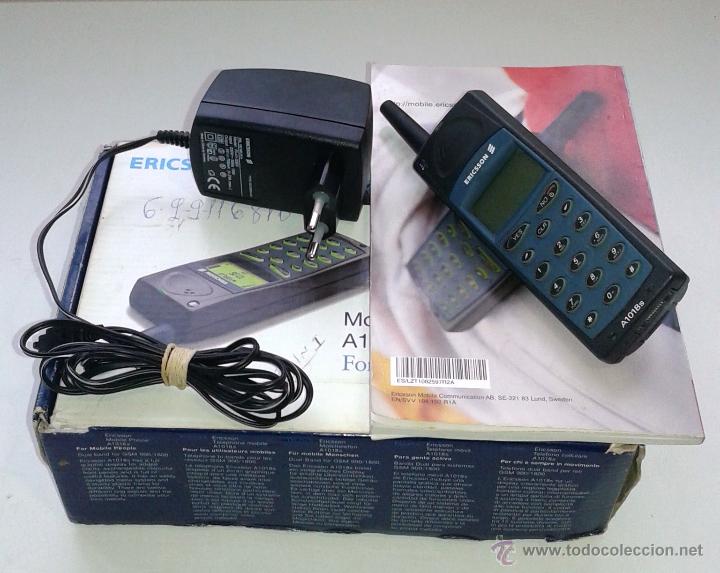
In the yard in 2001. Ericsson is living its last days as the sole producer of mobile phones: a joint venture with Sony will be created in October, which will live to 2012. The most popular model is the Ericsson A1018 (pictured above), and its only noticeable advantage (besides the ability to make and receive calls) are interchangeable panels, which are actively advertised by cellular operators. Phones with a black and white screen have reached the peak of their development, since 1999, the ultra-thin and lightweight Ericsson T28 has been produced . In 2001, the first smartphones appeared, such as the Nokia 7650 model., with a relatively large screen and a VGA camera. Functionality is at the expense of battery life and size, and since then, mobile devices are becoming more and more, and working from a single charge less.
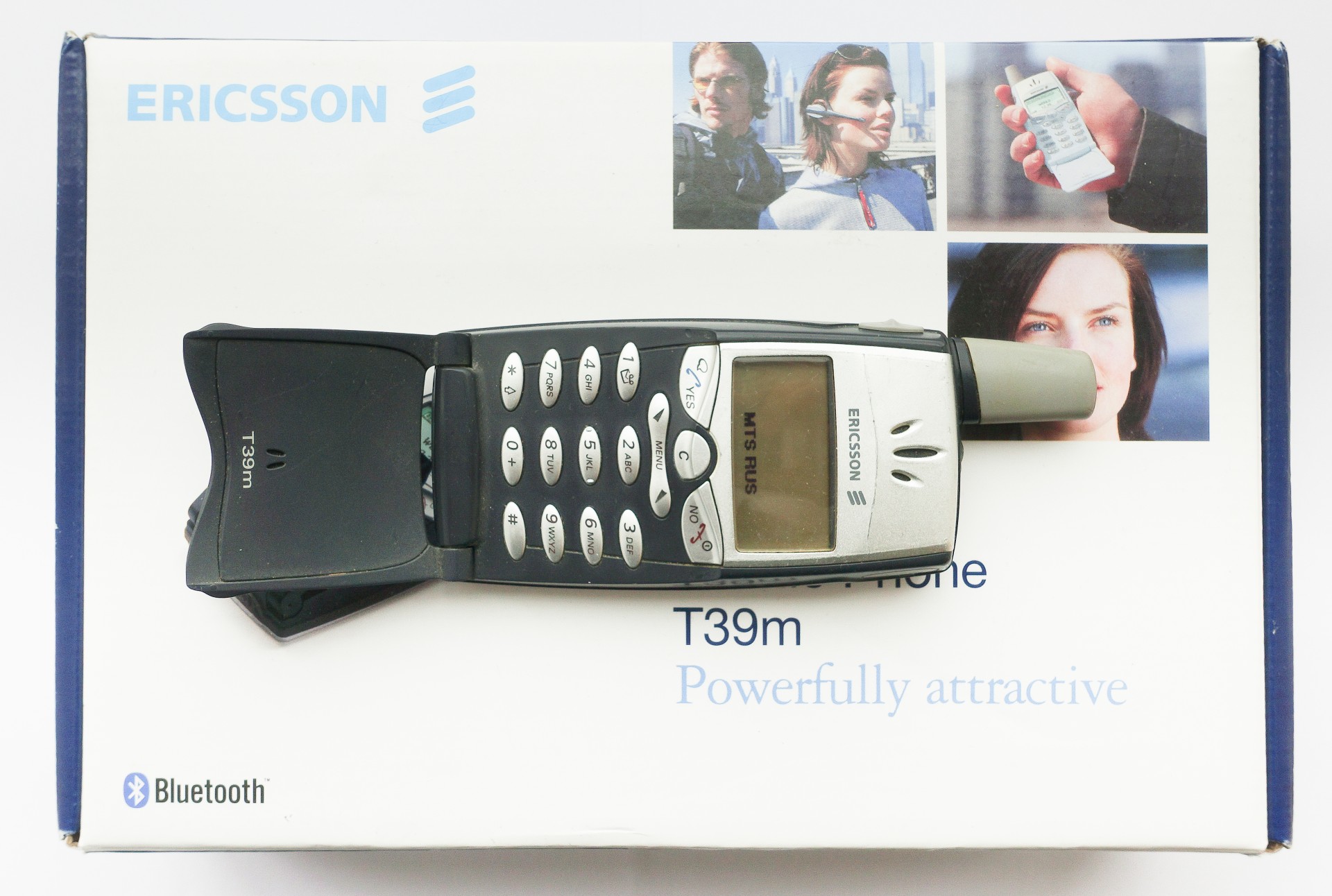
Released in the fall of 2001, the Ericsson T39 is thus one of the last phones of the past era, when the very ability to make calls from anywhere, receive calls and communicate via SMS seemed to be the pinnacle of functionality. But there are signs of the new time in this model: early Bluetooth version 1.0b and two data transfer standards. The first, HSCSD (up to 57.6 kilobits per second) was forgotten over time, the second, GPRS, is still used today. Your most modern iPhones and Samsung are able to do it, but usually if you see the G icon on the screen, it means that the Internet does not work.
In the magazine Wired in November 2001 write: Ericsson has packed absolutely all modern features into a phone the size of a deck of cards. And they mention the main advantage for the target audience - business people - support for tri-band GSM at frequencies of 900, 1800 and 1900 megahertz. At that time, even cheap phones had dual band support, but 900/1800 were used in Europe, and in the USA, the GSM connection worked at 850/1900 frequencies. Support for GSM 1900 ensured performance on missions across the ocean, and generally allowed you to stay connected in 140 countries around the world, almost everywhere except Japan, where there was no GSM at all.

I got the phone in a box with all the documents and a pair of useful accessories. The condition is noticeably twisted. On AliExpress, they still sell the “recovered” type T39 with beautiful photos in the description for $ 50. The eyewitnesses who bought them, however, report that these are old phones painted with a brush. Therefore, I chose a lot more expensive, but more authentic, and without late intervention. Moreover, the kit was a clip. The photo above shows why it is needed. In addition to the standard leather case, you could screw a special screw into the phone, which was inserted into the clip, and she, in turn, was hung on the belt. The phone was easily removed from the clip. So, if it is not included with your copy, then with high probability you will not find it separately.

The Wired article mentions the price of the phone in 2001 - $ 300 (430 modern). Now so much is not the cheapest, but not the most expensive smartphone. At the same time, my social status was sharply different from those successful people on the box from the phone, and, to be honest, I could not afford cellular communication. But I really wanted to, the mobile phone seemed to be a watershed between a vague past and a bright future. But the phone (Ericsson T20) bought for 80 bucks, in a mint box of some European mobile operator. How much did the connection cost then? Let's look in the web archive.

For example, in July 2001, MTS offers the “Economy” tariff. The crisis of 1998 at that time was quite recent, and prices are indicated in arbitrary units, roughly corresponding to the dollar. The official rate for the same month was 29.25 rubles per dollar. It turns out about 150 rubles per month of subscription fee, 3.5 rubles per minute for mobiles of the same operator and more than five rubles per city, the same for incoming, if from outside the network. If you try to estimate inflation on the cost of a city call, then in modern money a minute cost about 17 rubles. Now for this money you will receive approximately two days almost without limit on calls and SMS, and a kilogram of the Internet in addition.
Expensive, and this is still excluding taxes. Then there were still actual jokes about having time to say everything you need in five “free” seconds at the beginning of the call. For long negotiations on the city, and for the Internet, home phones were used, for intercity - prepaid cards. A typical case for a mobile phone is to send an SMS “I have arrived”, to quickly discuss business, to agree “I will call, then go down to the watch of the hostel”.

In Moscow in 2001, the operator “Megaphone” just started working. I wanted to call it the third, after Beeline and MTS, but if you count the GSM network operators. The NMT cellular networks were still working (long-range, cheap, with interference, it was Moscow Cellular Communications, later Skylink, now it seems Tele2) and CDMA (Sonnet, the legendary life-long semi-unlimited tariff for inexpensive with a huge down payment, was also absorbed by Skylink) . It seems that with the advent of MegaFon, the prices for cellular communications went down. In 2003, I became their subscriber for the sake of economy. Network coverage left much to be desired. That is why the most valuable feature of the Ericsson T39 (and other phones) was not the American range or GPRS, but this LED.

On it you can, as now, learn about the missed call and the dead battery, but not only. It periodically flashes green just when the phone is registered on the network, and when the network is lost, it does not blink. It was possible to quickly verify that, in principle, someone could reach you, and, if necessary, shift the phone to another place - suddenly there is a better reception. A large antenna solves the same problem of not the most ideal communications coverage: even now, in a remote province, far from the nearest base station, it is possible to talk "by Ericks" more reliably than with a modern smartphone.
Internet
Ericsson T39 is the company's second phone that supports packet data transfer. The first was the model R520, the phone is cheaper and larger, with similar functionality and controversial design, as if the phone had already moved the tank at the factory. Together with Bluetooth and infrared, this made it possible to connect to the Internet from a laptop or from a pocket computer. As far as I remember, the functionality of the phone outpaced the capabilities of cellular networks, for example, in this note it is reported that Beeline began providing data transfer services in April 2002, and this functionality is delayed for MTS. However, in the fall of 2002, I myself used the GPRS-Internet through the MTS provider, you can read more about this in this part of the memoirs .

I did not conduct a study of Internet prices of those times, the first year or even more GPRS from memory at least worked for MTS free of charge, in test mode. Then the megabyte of data cost about 30 rubles, later the cost fell to 10 rubles. Eight years ago, in attempts to determine the most profitable tariff with data, and in order to collect classes, I published this description of prices for mobile Internet on Habré , which itself became a historical document. Quote: "The cost of 300 megabytes will be from 1,485 to 2,085 rubles," and by megabyte in 2010, it was necessary to pay 3.5 rubles.
Despite the cost, until about the years 2005-2006, when both the dedicated Internet at home and WiFi became available, I regularly used the phone to access the network. The high price was compensated by the low speed: it would still not have been possible to pump a lot through a narrow channel. In the context of the Ericsson T39, I could not find the exact parameters, but it seems that it supported simultaneous loading of three “timeslots” and sending data one by one, which roughly corresponds to a bandwidth of 60 kilobits per second “from there” and a little more than 20 kilobits “there.”
Not fast, but then the alternative was a modem with a theoretical maximum of 56 kilobits per second, or a “modem” connection over a cellular network with a limit of 9600 bits per second. Like voice communication, the mobile Internet at first seemed like magic and sorcery. Setting it up was not so difficult, but not as it is now, when “you turn it on and it works”. I still remember the magic line AT + CGDCONT = 1, “IP”, “internet.mts.ru”, which had to be hammered in when establishing a connection from a computer or PDA, otherwise nothing worked. From the side of the computer, the phone seemed to be a modem, the connection went through a virtual serial port (with a real connection via IrDA or Bluetooth), or through a real one, using this cable.
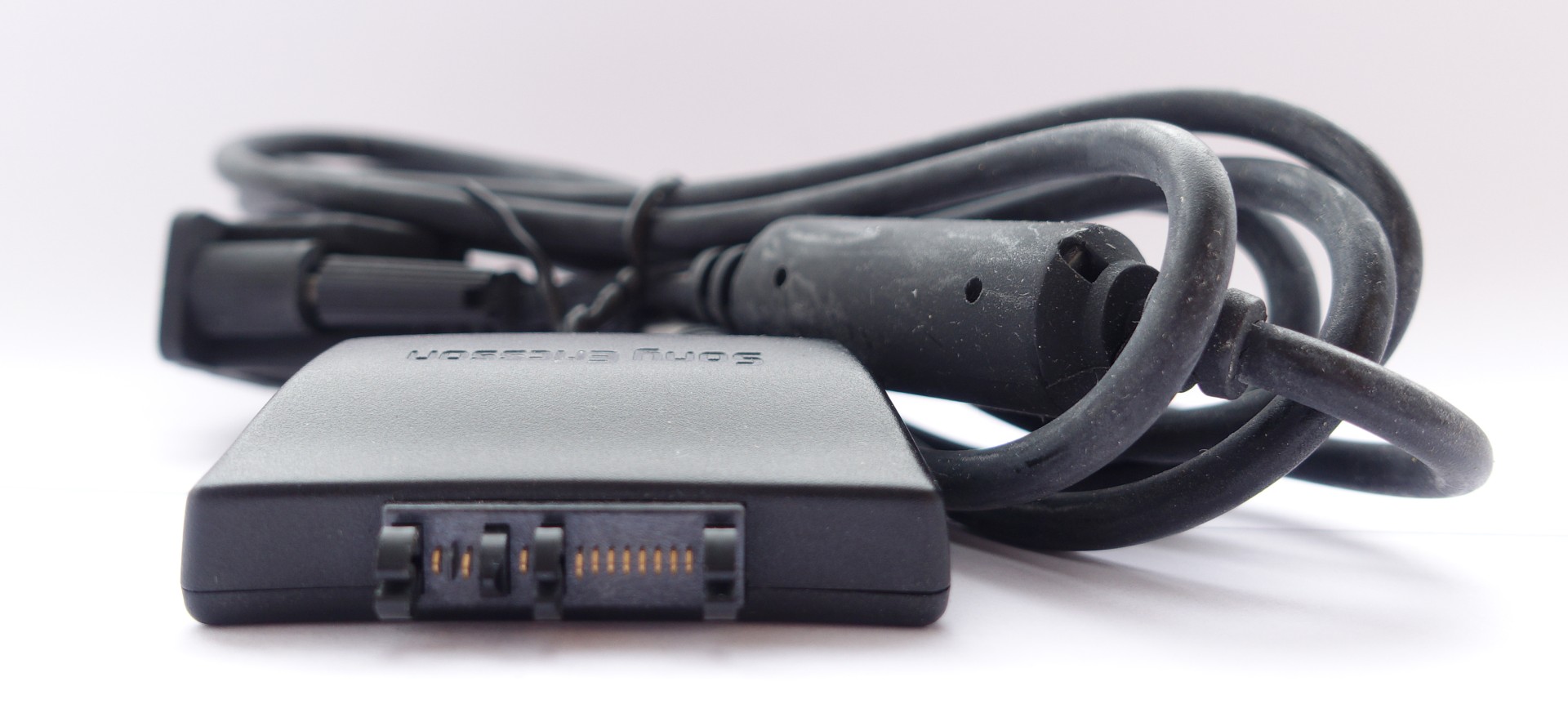
The phone had the functions of direct access to the network. Minimalistic email client, now of course non-working due to the lack of support for a secure connection. This client was then used. And the WAP-browser, which, it seems, has never been used by anyone. WAP - it was an attempt to create a special Internet ( with preference ) for phones with a microscopic screen, mobile operators have long tried to build an additional cash cow out of it. As a result, by the end of their existence, WAP sites have become network cow bread.
Then it was fashionable to expand the functionality of the phone with additional modules. For Ericsson, it was possible to buy a small QWERTY-keyboard (there were some huge stocks of these keyboards in the MTS offices, but they only approached older mobile phones, not this). There was even an MP3 player, but I don’t have such a rarity. But there is an unpacked (now probably forever) wired headset with a microphone and a clip.
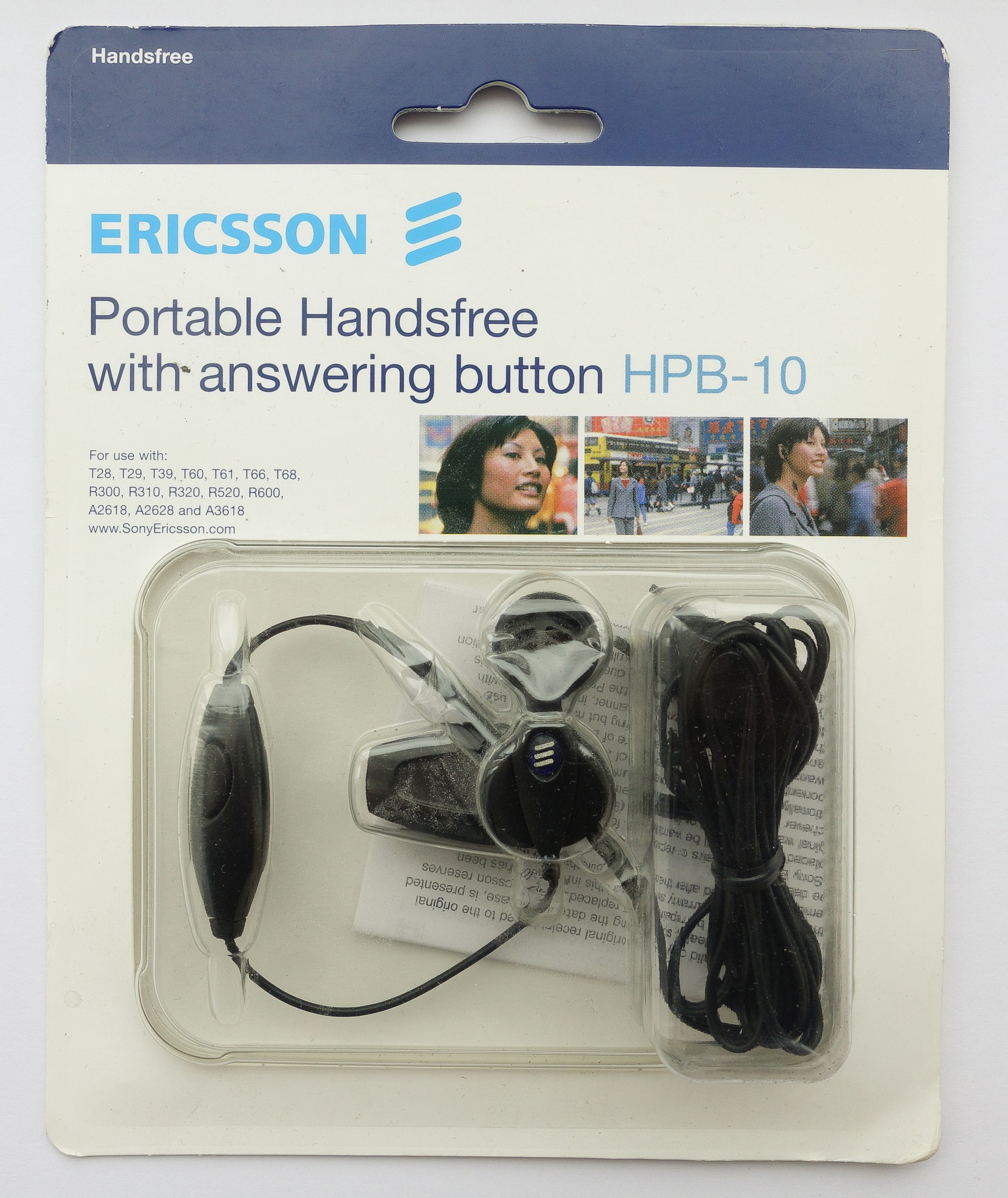
Of course, the most modern accessory for such a phone was a wireless Bluetooth headset. Ericsson T39 has rudimentary, but quite reliable voice recognition, can announce the caller in a human voice. The sizes of the headset of those years were of course fantastic, it looked like a tablespoon, which for some reason you screwed to your ear. Since I rarely talk at the wheel, and generally rarely speak, the value of headsets has always been controversial for me: with irregular use, it turned out that she didn’t need it at first for a long time, and when needed, she disconnected from the phone, or just got the battery.

The current state The
expected, but still pleasant discovery was the excellent backward compatibility of cellular networks with ancient phones. Especially for the Ericsson T39, I got a new SIM card. It is fully compatible with the phone, like the cellular network itself. GPRS also works, in general - bought, inserted and used. The laptop in 2001, most likely running Windows ME or Windows 2000 (XP was released only in October of the same year), will cause much more compatibility issues.

Unlike other old mobile phones, the Ericsson T39 has no problems with long SMS - they are displayed as one message. Although the phone is European, Russian is supported. Is that the Russian letters on the keyboard there. And anyway, do you still remember what pain it is to type in sms with buttons? The original battery is still alive, although the capacity is lost. But even with a thin and tired battery (it was still thick), the phone works in standby mode for two days, an enviable figure for modern smartphones.

“Down with the phone” in 2001 is not on Instagram and Facebook, but on the mobile game. The heyday of mobile games on simple phones occurred in the era of color devices. But behind this simple game I spent a lot of time. I do not even know what was cooler, Erix or proprietary "snake" from Nokia.

But the connector from Ericsson is a failure. Contact pads for connecting accessories were from other manufacturers. But the power connector in Nokia phones was separate, here it was two more contacts, and a strange connector design. Over time, the contacts are necessarily oxidized, they had to be regularly cleaned with something sharp. Later Sony Ericsson phones retained a similar design, but they made it more compact, until finally the MicroUSB connector was introduced everywhere. Or USB-C. Or Lightning or whatever it is. Anyway, the universal charging for phones 15 years ago is a macaroni monster with twenty heads. Now, in most cases, three is enough.

In theory, the Bluetooth standard should be backward compatible up to the earliest specifications, but I couldn’t connect the phone to Windows 10: they see each other, but at the stage of entering the PIN code, there is a mutual misunderstanding. The network has a lot of complaints about problems with Bluetooth devices after relatively recent updates of Windows, apparently during the process of updating the stack, accidentally (or intentionally) forgot about rare devices. With a smartphone on the Android phone is connected, you can even send business cards back and forth.
Going to the Internet via GPRS from a modern computer is generally still a pleasure. Old software and operating systems were built with the expectation of narrow communication channels, modern ones assume that you are connected to the Internet anytime and anywhere. On trips, it still causes frustration, when a Simka with limited traffic is bought, it is distributed over numerous devices via WiFi, and at night all these devices begin to cheerfully upload photos and videos to the cloud. Even a banal telemetry in the company with a messenger will easily put a 60-kilobit channel. This connection will look something like this.

And yet, I want to try something. The article was being prepared on the go, and I did not have access to my numerous laptops with the right software. I used a laptop with Windows 7 - he doesn't understand the Ericsson T39 either. But I managed to connect two devices, initiating a connection from the phone. Well, for the first time in many years, we create a connection profile as if through a modem.
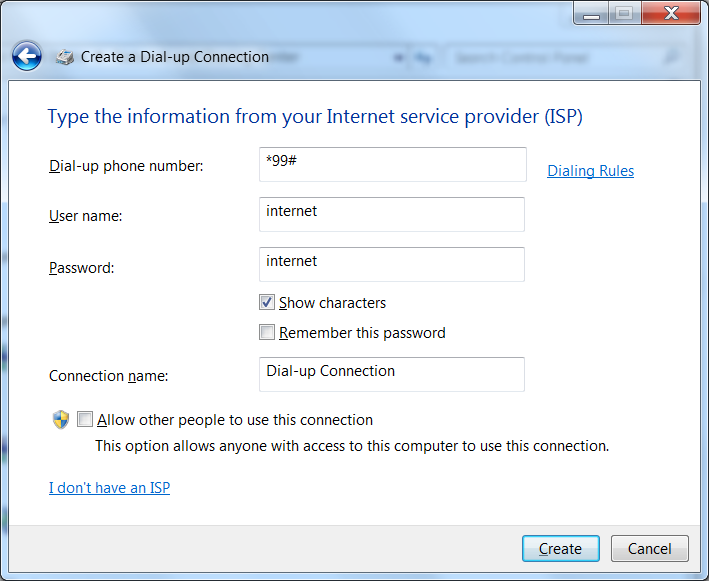
The magic command with information about the Internet access point is no longer necessary to enter, the mobile operator apparently cope without it. We enter username and password (internet and internet), we connect, it works! On the phone, the data transmission is reported by a cap above the signal strength indicator.

The ancient site Mypsion.ru from the phone loaded quickly enough minutes after a half. For another three and a half minutes, the computer tried to load the advertisement banner that had been added there relatively recently, but could not - the phone rebooted, the connection was lost.
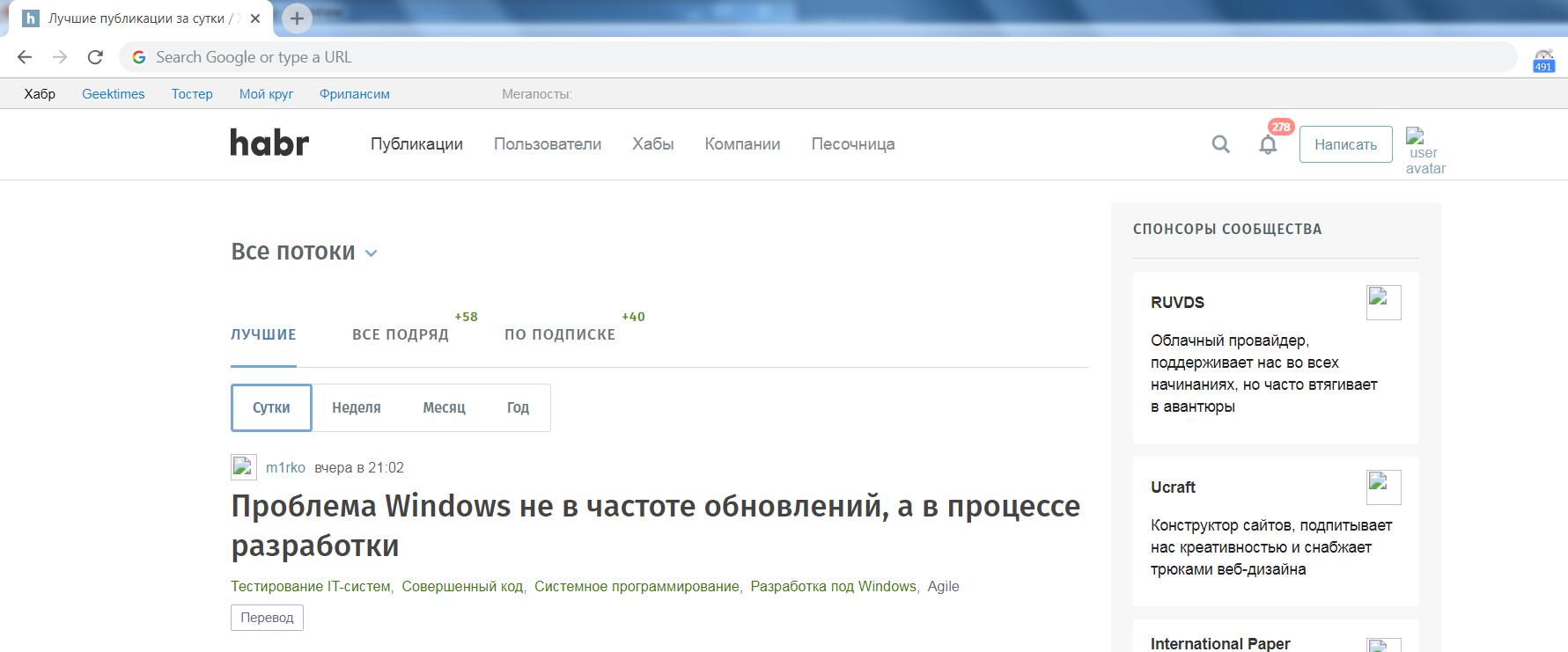
We try to load the main page of Habr. Almost 8 minutes of suffering, after which the connection falls off. The text has loaded, not all downloaded pictures. The Windows 7 Resource Monitor shows that system services and programs sometimes eat up half of the available channel: they don’t know they are working through a 17-year-old telephone.

We try SpeedTest: here I accelerated the process by preloading a page with a dozen advertising banners via WiFi. But even this did not help: it does not work. However, it is enough to determine the download speed of the file, download something from the mirror of the Linux distributions of Yandex. 4.8 kilobytes per second or 38.4 kilobits of real bandwidth. We can say that the phone honestly works on almost one hundred percent of its capabilities. Nine days to download a DVD image, or rather, in five minutes something will fall off again, and you will have to start over. Does anyone else remember what download managers are?
However, not bad. Though not without problems, the phone of 2001 is adequately built into the modern infrastructure, it works with all its might. Its characteristics have not deteriorated with age, just the Internet has gone ahead. The same Habr page weighs 5.6 megabytes, and even if the phone stubbornly downloads it at five kilobytes per second, even if other programs and operating systems do not interfere with it, a full download will take almost twenty (!) Minutes anyway.
GPRS on the background of the carpet

The beginning of the two thousandths is quite a cloudy time, or at least this is what I remember this period. The mobile phone seemed to be a pass to a more modern life, when there is a carpet behind, a bright future ahead. Extremely modern at the time the piece of iron now does not cause the sensation of novelty, too much has changed. Many years have passed, and the ancient phone with a dial plate in the company with the Ericsson T39 looks quite organic, like things from about the same past.
Not all of these devices live up to modern years, the Ericsson T20 once just stopped turning on. It's nice that the T39 is still holding up. I think it will be like this for another five years, after which the old standards will gradually cease to be supported, as in the 2000th, they abandoned the outdated DAMPS digital network. That's when this phone will become a real rarity, but now it is quite nothing. If you find (or make yourself yourself) a new battery for it, there will be an excellent backup phone for a rainy day. With a smart “physical” call answering interface: by opening a flip. They no longer do that.
